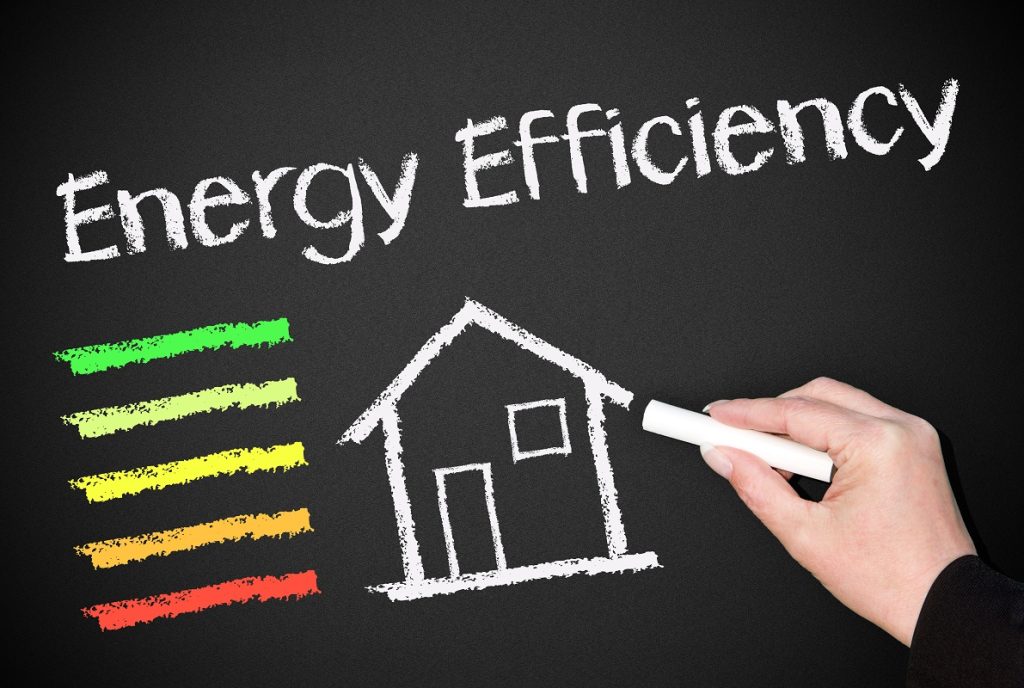- Upgrade to energy-efficient appliances like those with ENERGY STAR label.
- Optimize home insulation by sealing gaps and cracks and adding quality insulation materials.
- Implement smart thermostat technologies for remote temperature control and data tracking.
- Install energy-efficient windows with Low-E coating and utilize window treatments for added insulation.
- Obtain residential Energy Performance Certificates (EPCs) for personalized recommendations to improve energy efficiency in your home.
Energy efficiency is not just a buzzword; it’s a vital component of sustainable living that yields significant financial savings over time. By implementing practical and strategic modifications, your home can become a model of efficiency and environmental responsibility. Here are five insightful tips to help you achieve an energy-efficient home.
1. Upgrade to Energy-Efficient Appliances
Energy-efficient appliances are designed to utilize minimum energy to complete the required task. They often surpass energy standards set by governing bodies, translating into reduced energy consumption and lower utility bills. Look for the ENERGY STAR label or similar certifications when purchasing new appliances to ensure they meet energy efficiency requirements.
Moreover, consider the appliance’s lifetime energy cost. While energy-efficient appliances might be more expensive upfront, their lower operating costs typically compensate for the initial investment, resulting in overall savings.
2. Optimize Home Insulation
A well-insulated home retains heat during winter and keeps cool air in the summer, reducing the reliance on heating and cooling systems.
Here are some tips on how to optimize home insulation:
Wall Insulation
Wall insulation is essential to keep heat from escaping through the walls during cold weather and prevent unwanted heat gain in hot months. The first step in wall insulation optimization is inspecting for gaps, cracks, or holes that need sealing. This process helps reduce drafts and air leakage, which can significantly impact your home’s energy efficiency. Expanding foam sealants or caulk can seal these gaps and cracks.
Attic Insulation
Properly insulating your attic is crucial in maintaining a comfortable indoor temperature and preventing energy loss. Ensure no gaps or cracks between the walls and the attic floors where air can escape. Install insulation batts or rolls to provide a barrier between the attic and living spaces.
Basement Insulation

Basement walls and floors are often a source of significant heat loss in a home. To optimize basement insulation, start by sealing any gaps or cracks in the walls or floors with expanding foam sealants. Next, consider adding insulation to the basement walls using batts or rigid foam panels.
Hot Water Insulation
Insulating hot water pipes and tanks is a simple yet effective way to improve energy efficiency in your home. Wrapping exposed hot water pipes with insulation sleeves or tape helps minimize heat loss, reducing the need for higher temperature settings on your water heater.
3. Implement Smart Thermostat Technologies
Smart thermostats offer a seamless way to manage your home’s temperature effectively. These devices learn from your habits and preferences, adjusting the heating and cooling systems to optimize energy usage while maintaining comfort. With remote access through mobile apps, you can control the temperature from anywhere, ensuring energy isn’t wasted when the home is unoccupied.
Utilizing a smart thermostat simplifies climate control and provides valuable insights into your energy consumption patterns. With this data, you can make informed decisions on adjusting your usage to maximize energy efficiency further.
4. Install Energy-Efficient Windows

Windows plays a crucial role in maintaining your home’s temperature. Energy-efficient windows prevent your home’s heated or cooled air from escaping. Consider double-pane windows filled with inert gas and coated with low-emissivity (Low-E) film to minimize heat transfer, thereby maintaining a consistent indoor climate and reducing the strain on your HVAC system.
Window treatments, such as thermal curtains, blinds, or shades, can also aid insulation. By managing sunlight penetration and providing an additional thermal barrier, these treatments contribute to a more energy-efficient home.
5. Obtain and Utilize EPC Recommendations
Energy Performance Certificates (EPCs) are invaluable tools in identifying areas for energy efficiency improvement in your home. Utilizing professional residential EPCs provides a detailed assessment of your home’s energy performance, offering a rating and suggesting specific upgrades to enhance energy efficiency.
By implementing recommendations from residential EPCs, you align your home improvement efforts with expert insights tailored to your property’s unique characteristics. From optimizing insulation to upgrading lighting and heating systems, these suggestions are designed to help homeowners achieve maximum energy efficiency and savings.
In Summary
Transforming your home into an energy-efficient haven doesn’t have to be overwhelming or expensive. Investing in energy-efficient appliances, optimizing insulation, employing smart thermostat technologies, installing energy-efficient windows, and utilizing expert recommendations from residential EPCs will create a comfortable living environment that is kind to the planet and your wallet. Embrace these strategies for a home truly designed for the future, combining sustainability with uncompromised living standards.

